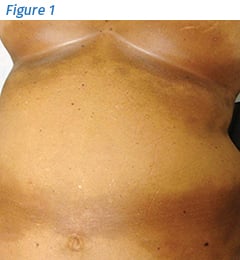"Over the last thirty years or so, in the face of the rapidly developing scientific and technological progress that characterizes modern medicine, a progressive process of the specialization of medical skills has become the norm. At the same time, with the lengthening of the average life expectancy, there has often been a simultaneous increase in patients affected by several chronic illnesses."
Hence, there is an ever increasing need, within the scope of acute hospital care, to be able to rely on internal medicine departments capable of caring for patients with "polypathology" and those who are "elderly and fragile" or, more simply, patients whose condition cannot be treated in just one specialist department."
This statement is taken from the mission of the Busto Arsizio Hospital's Medicine II Department headed by Dr. Guido Bonoldi. Bonoldi recently used UpToDate with a challenging patient case at the Internal Medicine Clinic.
The clinical case
"I examined a female patient in her mid-eighties in our clinic. She had been referred to us by her GP because of skin abnormalities that were not easily identifiable. (Her GP noted that he had never seen anything similar and was not sure where to begin. In such cases, an internist is consulted). The patient's history included a hysterectomy and surgery to correct vaginal vault prolapse; a myocardial infarction in 2007 treated by angioplasty plus a stent implant in the anterior descending artery; followed by a coronary artery bypass graft; phlebitis in February of this year, treated using LMWH; and another episode of phlebitis resolved spontaneously.


 UpToDate enables physicians to practice medicine while relying on the experience and expertise of more than 6,000 peer specialists...
UpToDate enables physicians to practice medicine while relying on the experience and expertise of more than 6,000 peer specialists...





